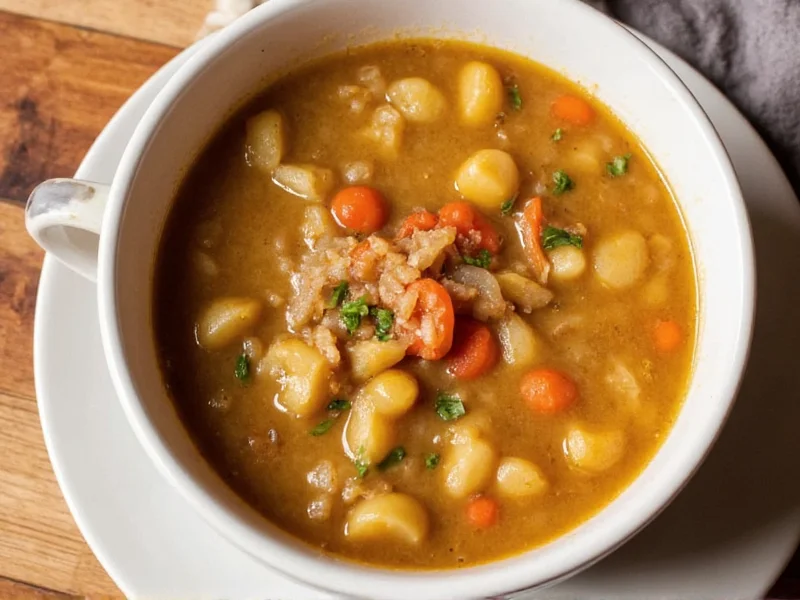French onion soup isn't just comfort food—it's a culinary art form perfected over centuries. When executed properly, this classic French bistro staple delivers a symphony of sweet caramelized onions, savory broth, and perfectly melted cheese that transforms simple ingredients into something extraordinary. The difference between mediocre and exceptional French onion soup lies not in complexity, but in technique and ingredient quality.
The History Behind France's Beloved Soup
Originating in 18th century Paris, French onion soup began as peasant food—a way to use stale bread and aging onions. Street vendors sold it from carts as an affordable, warming meal. By the 19th century, it had gained enough prestige to appear in Le Guide Culinaire by Auguste Escoffier, cementing its place in French culinary tradition. The version most recognize today—with melted cheese topping—became popular after World War II when American soldiers stationed in France brought their appreciation for the dish home.
Essential Ingredients for Authentic French Onion Soup
What separates authentic French onion soup from imitations? Four critical components work in harmony:
| Ingredient | Why It Matters | Professional Recommendation |
|---|---|---|
| Onions | Foundation of flavor | Yellow onions (80%), sweet onions (20%) for balanced sweetness |
| Broth | Carries and enhances onion flavor | Homemade beef broth with roasted bones for depth |
| Bread | Absorbs soup while providing texture | Day-old baguette, toasted until crisp but not burnt |
| Cheese | Creates signature flavor and texture | Comte or Gruyère (avoid pre-shredded cheese) |
Mastering the Caramelization Process
The single most crucial step—and where most home cooks fail—is properly caramelizing onions. Rushing this process creates bitter, unevenly cooked onions rather than the deep golden-brown sweetness essential to great French onion soup.
Professional chefs use a specific technique: slice onions uniformly (1/8 inch thick), cook over medium-low heat with butter and a pinch of sugar, and resist stirring too frequently. The ideal caramelization takes 45-60 minutes—not the 15-20 minutes many recipes suggest. Adding a splash of dry white wine when onions reach a light golden stage enhances complexity without acidity.
Step-by-Step Preparation Guide
Follow this method for restaurant-quality French onion soup at home:
- Prepare 4 lbs onions (yellow and sweet varieties), sliced uniformly
- Melt 4 tbsp butter in heavy-bottomed pot over medium-low heat
- Add onions and 1 tsp sugar, stirring occasionally for first 15 minutes
- Reduce heat to low, cover partially, and cook 45-60 minutes until deep golden brown
- Add 1 cup dry white wine and reduce completely
- Pour in 8 cups rich beef broth, simmer 30 minutes
- Toast baguette slices until crisp but flexible
- Fill oven-safe bowls with soup, top with bread and 2 oz Gruyère per serving
- Broil until cheese bubbles and develops golden spots
Common Mistakes That Ruin French Onion Soup
Avoid these pitfalls that compromise even well-intentioned attempts at the best French onion soup:
- Using only one onion variety – A blend creates more complex sweetness
- Rushing caramelization – Proper browning requires patience, not high heat
- Adding broth too soon – Onions need time to develop fond before liquid addition
- Using pre-shredded cheese – Anti-caking agents prevent proper melting
- Overloading bowls with bread – Creates soggy texture rather than contrast
Variations Worth Trying
While purists might scoff, thoughtful variations can enhance traditional French onion soup when executed properly:
- Sherry enhancement – A tablespoon of aged fino sherry added with broth creates subtle nuttiness
- Umami boost – A single dried porcini mushroom steeped in broth adds depth without overpowering
- Herb infusion – A thyme sprig and bay leaf during simmering adds aromatic complexity
- Vegetarian adaptation – Mushroom and roasted vegetable broth with miso paste for umami
Remember that the best French onion soup variations respect the dish's fundamental character—they enhance rather than mask the onion's natural sweetness.
Serving French Onion Soup Properly
The final presentation significantly impacts enjoyment. Use these professional tips:
- Warm soup bowls before filling to maintain ideal serving temperature
- Cover the entire soup surface with bread—no gaps where cheese might sink
- Broil until cheese develops leopard spotting (golden and brown spots)
- Serve immediately while cheese is molten but not scalding hot
- Accompany with a simple green salad—never heavy sides that compete
When executed with care, French onion soup transcends its humble origins to become a dish worthy of celebration. The best versions balance sweet and savory elements, offer contrasting textures, and deliver warmth that extends beyond physical temperature to evoke culinary tradition. Whether enjoyed in a Parisian bistro or your own kitchen, exceptional French onion soup remains one of cuisine's most satisfying achievements.











 浙公网安备
33010002000092号
浙公网安备
33010002000092号 浙B2-20120091-4
浙B2-20120091-4